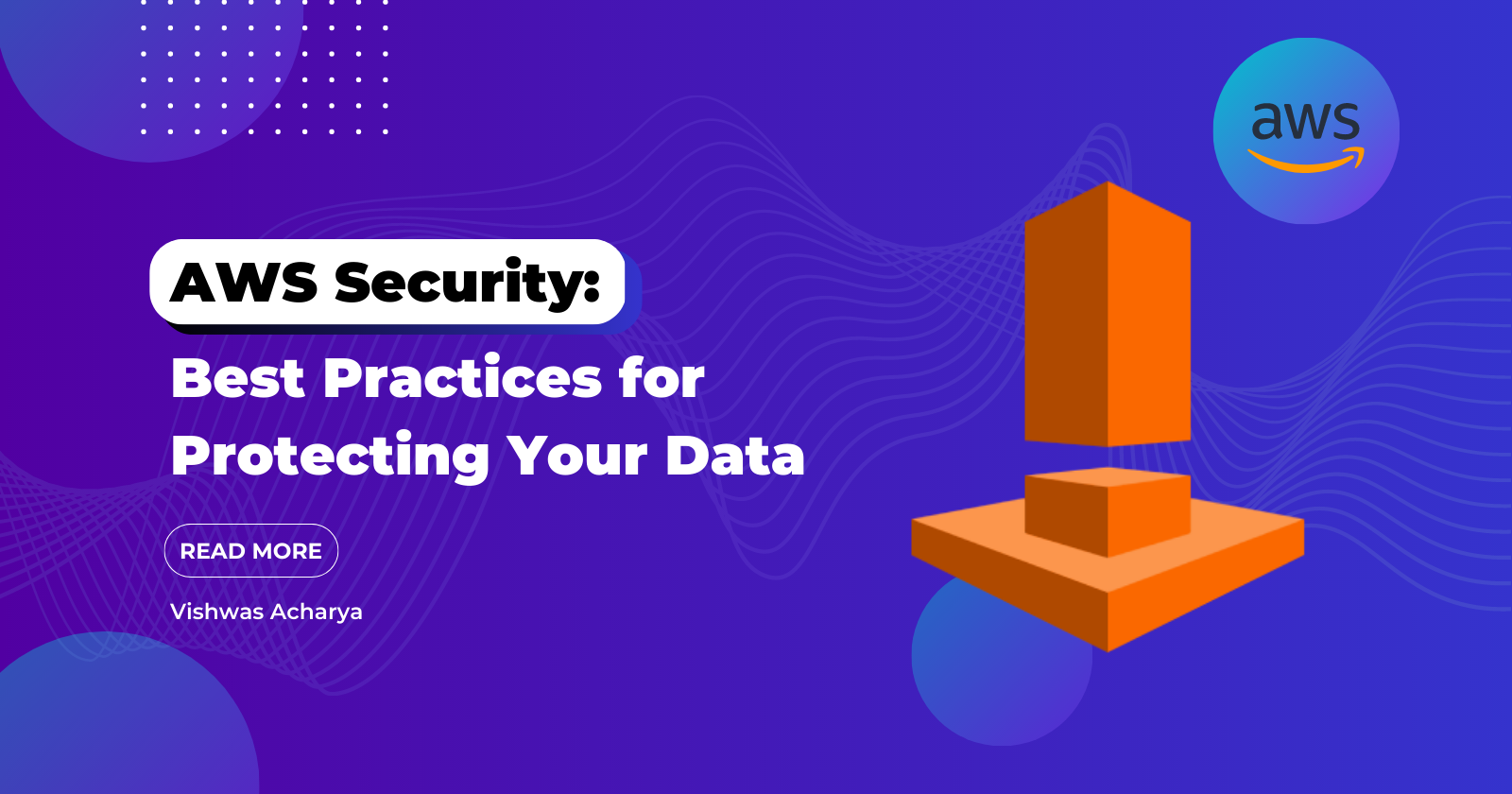AWS Security: Best Practices for Protecting Your Data
 Vishwas Acharya
Vishwas AcharyaTable of contents

In recent years, cloud computing has become increasingly popular among businesses of all sizes. Amazon Web Services (AWS) is a leading provider of cloud-based services, offering numerous benefits such as flexibility, scalability, and cost-effectiveness. However, with the rise of cloud computing, there has also been an increase in cyber threats, making it crucial to implement effective security measures to protect your data. In this article, we will discuss the best practices for AWS security to ensure your data remains secure.
Introduction
In this section, we will provide a brief overview of AWS and the importance of data security.
What is AWS?
AWS is a cloud computing platform provided by Amazon, which allows businesses to access a wide range of services such as computing power, storage, and databases.
Why is Data Security Important?
Data security is critical for businesses as it protects sensitive information such as financial data, customer information, and intellectual property. A data breach can lead to significant financial losses, damage to a business's reputation, and even legal repercussions.
AWS Security Best Practices
In this section, we will discuss the best practices for AWS security.
1. Use Multi-Factor Authentication (MFA)
MFA is a security mechanism that requires users to provide two or more forms of identification before accessing their AWS account. This adds an extra layer of security and helps to prevent unauthorized access.
2. Implement Network Security
AWS offers a range of network security features, including virtual private cloud (VPC) and security groups. These can be used to restrict access to your resources and limit the risk of a data breach.
3. Secure Your Data
AWS offers various services such as S3 and Glacier for storing and securing data. It is important to ensure that your data is encrypted and backed up regularly to minimize the risk of data loss.
4. Regularly Update Your Systems
AWS regularly updates its services to address security vulnerabilities. It is important to stay up-to-date with these updates and implement them as soon as possible.
5. Monitor Your Systems
Regularly monitoring your systems can help you identify any security issues before they become major problems. AWS offers various tools for monitoring, including CloudTrail and CloudWatch.
6. Implement Access Control
Implementing access control is crucial to ensuring that only authorized users can access your AWS resources. AWS offers various features for access control, including identity and access management (IAM) and resource-level permissions.
7. Use Encryption
Encryption is an essential component of AWS security. AWS offers various encryption options, including server-side encryption and client-side encryption.
8. Implement Disaster Recovery
Disaster recovery is essential for minimizing the impact of a data breach or other security incident. AWS offers various disaster recovery options, including backup and recovery services.
9. Use AWS Trusted Advisor
AWS Trusted Advisor is a tool that provides recommendations for optimizing your AWS infrastructure, including security best practices.
10. Regularly Train Employees
Employee training is crucial to ensuring that your team is aware of the best practices for AWS security. Regular training can help prevent accidental security breaches and ensure that your team is up-to-date with the latest security measures.
Conclusion
AWS security is a critical component of any business's IT infrastructure. By implementing the best practices discussed in this article, you can minimize the risk of a data breach and ensure that your data remains secure. Remember to regularly update your systems, monitor your systems, implement access control, use encryption, and regularly train your employees.
FAQs
Q1. What is AWS Security?
AWS security refers to the measures taken to protect data stored on the AWS platform. This includes access control, encryption, disaster recovery, and more.
Q2. What is Multi-Factor Authentication (MFA)?
Multi-Factor Authentication (MFA) is a security mechanism that requires users to provide two or more forms of identification before accessing their AWS account. This adds an extra layer of security and helps to prevent unauthorized access.
Q3. What is Disaster Recovery?
Disaster recovery refers to the process of restoring systems and data in the event of a security incident or natural disaster. AWS offers various disaster recovery options, including backup and recovery services.
Q4. Can AWS Trusted Advisor help with security?
Yes, AWS Trusted Advisor is a tool that provides recommendations for optimizing your AWS infrastructure, including security best practices.
Q5. How often should employee training be conducted for AWS security?
Employee training should be conducted regularly to ensure that your team is up-to-date with the latest security measures. The frequency of training will depend on your business's specific needs and industry regulations.
In conclusion, AWS security is crucial for protecting your data and minimizing the risk of a security breach. By following the best practices discussed in this article, such as using Multi-Factor Authentication, implementing network security, and regularly training employees, you can ensure that your data remains secure. AWS offers a range of tools and services for securing your data, so be sure to take advantage of them to protect your business from potential security threats.
By Vishwas Acharya 😉
Checkout my other content as well:
YouTube:
Podcast:
Book Recommendations:
Subscribe to my newsletter
Read articles from Vishwas Acharya directly inside your inbox. Subscribe to the newsletter, and don't miss out.
Written by

Vishwas Acharya
Vishwas Acharya
Embark on a journey to turn dreams into digital reality with me, your trusted Full Stack Developer extraordinaire. With a passion for crafting innovative solutions, I specialize in transforming concepts into tangible, high-performing products that leave a lasting impact. Armed with a formidable arsenal of skills including JavaScript, React.js, Node.js, and more, I'm adept at breathing life into your visions. Whether it's designing sleek websites for businesses or engineering cutting-edge tech products, I bring a blend of creativity and technical prowess to every project. I thrive on overseeing every facet of development, ensuring excellence from inception to execution. My commitment to meticulous attention to detail leaves no room for mediocrity, guaranteeing scalable, performant, and intuitive outcomes every time. Let's collaborate and unleash the power of technology to create something truly extraordinary. Your dream, my expertise—let's make magic happen! Connect with me on LinkedIn/Twitter or explore my work on GitHub.